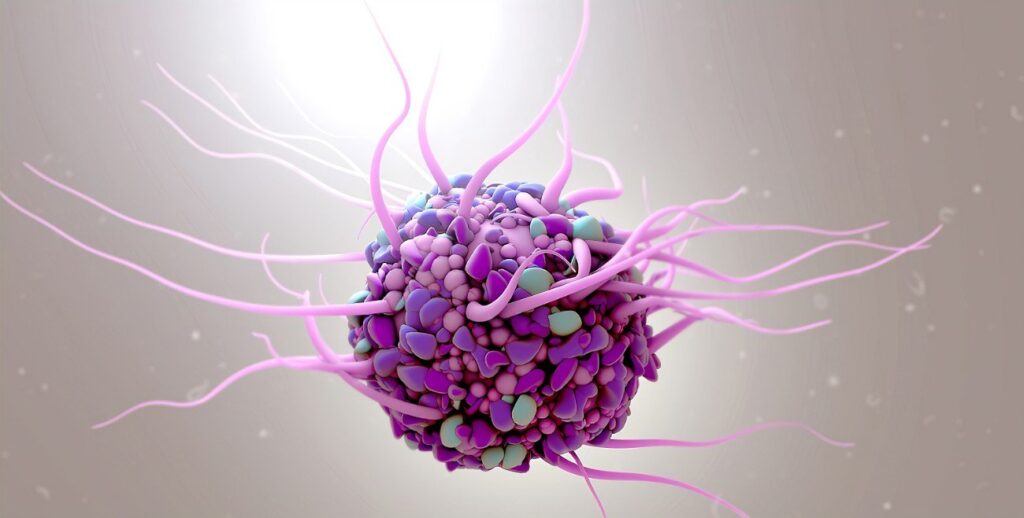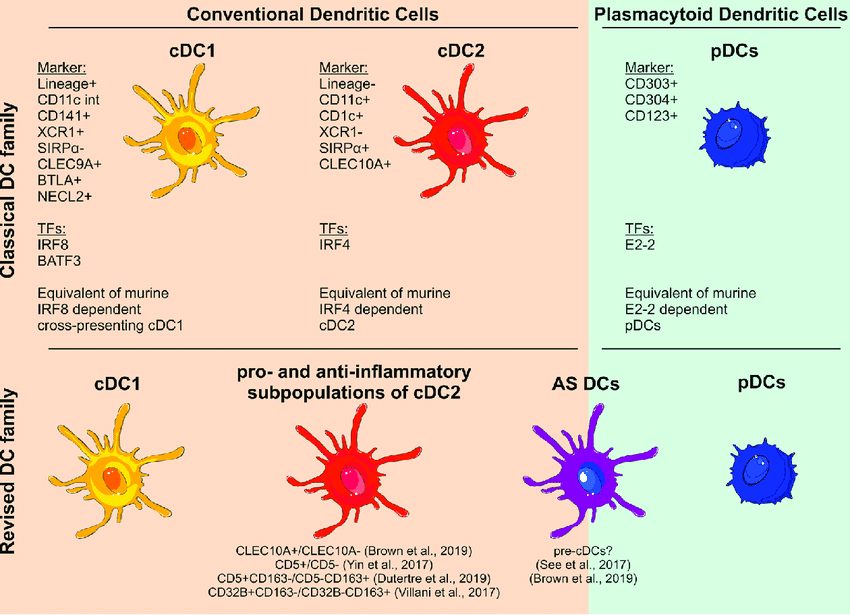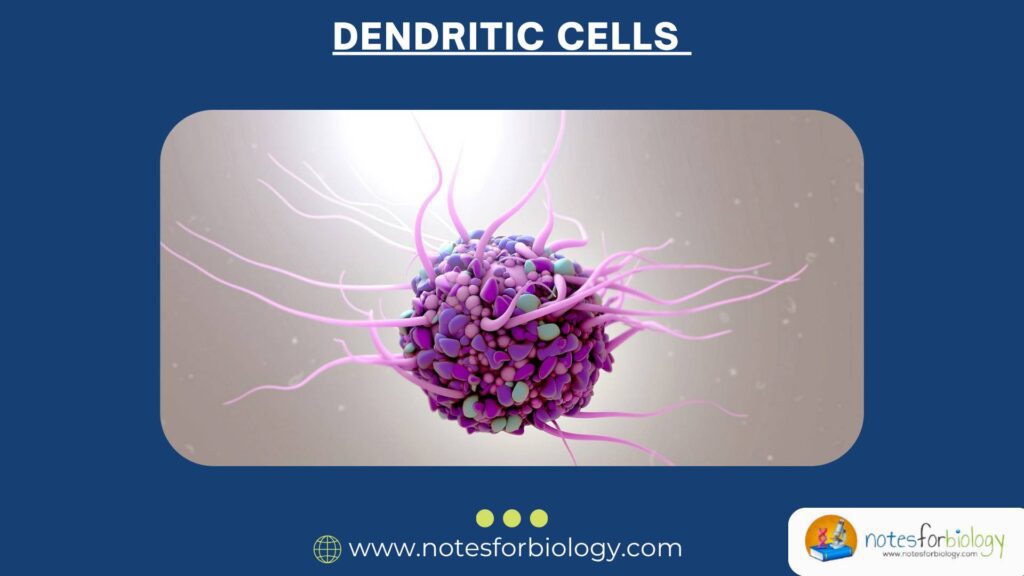Introduction
The immune system is our body’s sophisticated defense network, and within it lies a class of cells that serve as essential messengers between innate and adaptive immunity. These are the dendritic cells (DCs) — specialized white blood cells that detect danger, capture invaders, and instruct the immune system on how to respond. Like the watchtowers and alert systems of a fortress, dendritic cells play a critical role in detecting pathogens and triggering an appropriate immune response.
In this comprehensive and humanized overview, we will explore what dendritic cells are, how they are structured, their role in immunity, types, functions, and significance in health and disease. By the end, you will understand why dendritic cells are often called the “sentinels of the immune system.”
Table of Contents
1. Definition

Dendritic cells (DCs) are antigen-presenting cells (APCs) that play a central role in initiating and regulating the adaptive immune response. They are named after their branched, tree-like projections (from the Greek word “dendron” meaning tree), which help them interact with other immune cells.
Key Points:
- Specialized for capturing, processing, and presenting antigens to T-cells.
- Serve as a bridge between innate and adaptive immunity.
- Present in nearly all tissues, especially those in contact with the external environment (e.g., skin, lungs, gut).
2. Structure
Dendritic cells have a unique and adaptable structure depending on their maturation stage and location.

A. Morphology
- Immature DCs: Rounded or ovoid in shape with fewer projections.
- Mature DCs: Irregular with multiple dendritic processes or extensions that increase surface area.
B. Cellular Features:
- Large Nucleus: Active transcription to support immune signaling.
- Rich Cytoplasm: Contains many vesicles, endosomes, and lysosomes for antigen processing.
- Major Histocompatibility Complex (MHC):
- High expression of MHC class II molecules for presenting antigens to helper T-cells.
- Co-stimulatory Molecules:
- CD80, CD86, and CD40—required for activating T-cells.
- Pattern Recognition Receptors (PRRs):
- Toll-like receptors (TLRs) to detect microbial patterns.
C. Dynamic Nature
- DCs are highly plastic—they change shape and function based on their surroundings.
- They migrate from tissues to lymph nodes during infection.
3. Origin and Development
These cells are derived from hematopoietic stem cells in the bone marrow.
Developmental Pathway:
- Hematopoietic stem cell (bone marrow)
- Common myeloid or lymphoid progenitor
- Dendritic cell precursor
- Immature dendritic cell (in peripheral tissues)
- Mature dendritic cell (after antigen encounter)
Differentiation Triggers:
- Cytokines like GM-CSF, IL-4, and Flt3L
- Pathogen recognition through PRRs
4. Role in Immunity
Dendritic cells are key initiators of adaptive immunity and modulators of innate responses.
A. Innate Immunity
- Act as first responders to pathogens.
- Detect microbes using PRRs like Toll-like receptors.
- Produce cytokines and chemokines to alert and recruit other immune cells.
B. Adaptive Immunity
- Capture antigens in peripheral tissues.
- Migrate to lymph nodes.
- Present antigens on MHC molecules to T-cells.
- Activate naïve T-cells and direct their differentiation into effector cells (e.g., Th1, Th2, Th17, cytotoxic T-cells).
5. Antigen Processing and Presentation
Dendritic cells specialize in handling foreign antigens.
Steps:
- Antigen Uptake:
- Via phagocytosis, endocytosis, or pinocytosis.
- Antigen Processing:
- Proteins are broken down into peptides.
- MHC Loading:
- Peptides are loaded onto MHC molecules (Class I or II).
- Antigen Presentation:
- MHC-peptide complexes are displayed on the cell surface.
- T-cell Activation:
- Requires co-stimulatory signals and cytokine secretion.
6. Types of Dendritic Cells
Dendritic cells are a diverse group with different origins and functions.

A. Conventional (Classical) Dendritic Cells (cDCs)
- Found in tissues and lymphoid organs.
- Strong antigen-presenting capabilities.
- Subtypes:
- cDC1: Specialized in cross-presentation (MHC I to CD8+ T cells)
- cDC2: Better at presenting on MHC II to CD4+ T cells
B. Plasmacytoid Dendritic Cells (pDCs)
- Resemble plasma cells in shape.
- Produce large amounts of type I interferons (IFN-α/β) in response to viral infections.
C. Monocyte-derived Dendritic Cells (moDCs)
- Arise during inflammation from circulating monocytes.
- Commonly used in laboratory models and vaccines.
D. Langerhans Cells
- Specialized DCs in the epidermis of the skin.
- Express Langerin and contain Birbeck granules.
E. Follicular Dendritic Cells (FDCs)
- Found in lymph nodes; not true DCs (not bone marrow-derived).
- Present antigen-antibody complexes to B-cells.
7. Functions of Dendritic Cells
Dendritic cells serve a wide range of crucial functions:
A. Antigen Presentation
The main APCs for naïve T-cells.
B. Immune System Activation
- Trigger and shape adaptive immunity.
- Determine whether immune responses are stimulatory or tolerogenic.
C. Cytokine Production
Produce IL-12, IL-10, TNF-α, and IFN-α/β to direct immune responses.
D. Tolerance Induction
Help prevent autoimmunity by inducing regulatory T cells (Tregs) in the absence of danger signals.
E. Cross-Presentation
Unique ability to present extracellular antigens on MHC I, activating CD8+ cytotoxic T-cells.
F. Memory T-cell Maintenance
Support long-term immune memory.
8. Dendritic Cells in Health and Disease
Dendritic cells have a dual role — protecting the body, but also contributing to disease when dysregulated.
A. Infections
- DCs detect and present viral, bacterial, and fungal antigens.
- pDCs are crucial in fighting viruses by releasing interferons.
B. Cancer
- Tumors can suppress DC function.
- DC-based cancer vaccines are being developed to enhance anti-tumor immunity.
C. Autoimmune Diseases
Overactive DCs may contribute to diseases like rheumatoid arthritis, lupus, and multiple sclerosis.
D. Allergies
DCs present allergens to T-cells, promoting allergic inflammation.
E. Organ Transplants
DCs play a role in graft rejection and tolerance induction.
9. Clinical and Therapeutic Applications
Dendritic cells are at the forefront of many therapeutic strategies.
A. Dendritic Cell Vaccines
- Example: Provenge® for prostate cancer
- DCs loaded with tumor antigens ex vivo, then injected into patients to stimulate immunity.
B. Immunotherapy
DCs can be engineered to express specific antigens or tolerogenic molecules.
C. Autoimmunity Treatment
Tolerogenic DCs may suppress harmful immune responses.
D. HIV and Viral Diseases
Studies focus on enhancing DC responses to control infections.
E. Biomarkers and Diagnostics
DC subsets in blood can serve as biomarkers of disease progression or treatment response.
10. Key Differences Between Dendritic Cell Types
| Feature | cDC1 | cDC2 | pDC | moDC | Langerhans Cells |
|---|---|---|---|---|---|
| Origin | Bone marrow | Bone marrow | Bone marrow | Monocytes | Bone marrow |
| Location | Tissues, lymph nodes | Tissues | Blood, lymph nodes | Inflamed tissues | Skin |
| Function | Cross-presentation | MHC II presentation | Type I IFN production | Inflammation response | Skin immunity |
| Surface Markers | CD8α, XCR1 | CD11b, CD4 | CD123, BDCA-2 | CD14, CD11c | Langerin |
Conclusion
Dendritic cells are indispensable components of our immune system. From detecting pathogens to shaping the immune response, they are involved in nearly every aspect of immunity. Their ability to present antigens, produce cytokines, and induce tolerance or activation makes them highly versatile and essential.
As science advances, our understanding of dendritic cells continues to deepen, leading to new diagnostic tools, vaccines, and immunotherapies. Whether in the fight against cancer, chronic infections, or autoimmune diseases, dendritic cells hold the promise of guiding our immune system toward better health.
In essence, dendritic cells are the storytellers of our immune system—collecting information from the battlefield and relaying it to the generals (T-cells) to decide the best course of action. Their story is vital to the symphony of defense and balance in the body.
FREQUENTLY ASKED QUESTIONS
Why are dendritic cells called antigen-presenting cells (APCs)?
Because they capture, process, and present antigens on MHC molecules to T-cells to initiate immune responses.
Can dendritic cells fight infections directly?
Not directly like phagocytes, but they coordinate immune responses by activating T-cells and other immune cells.
Where are dendritic cells found?
They are found in almost all tissues, especially in the skin, mucosal surfaces, and lymphoid organs.
Related Articles




